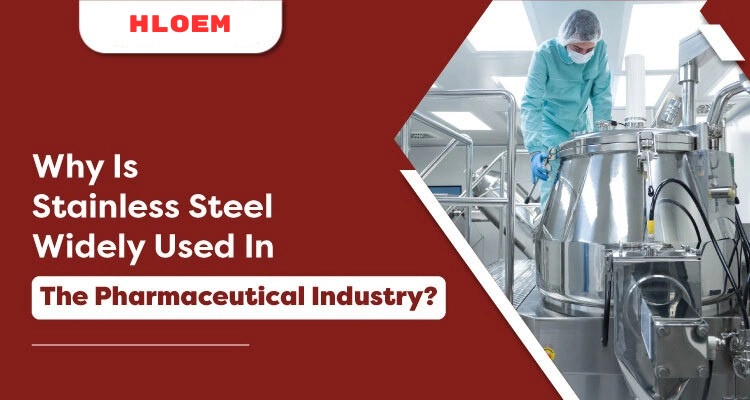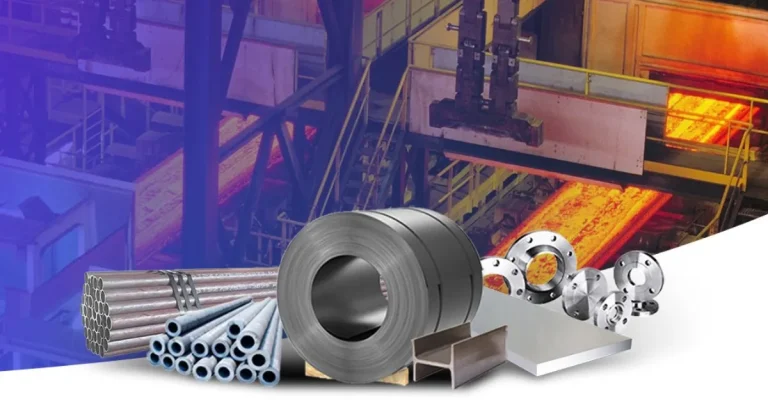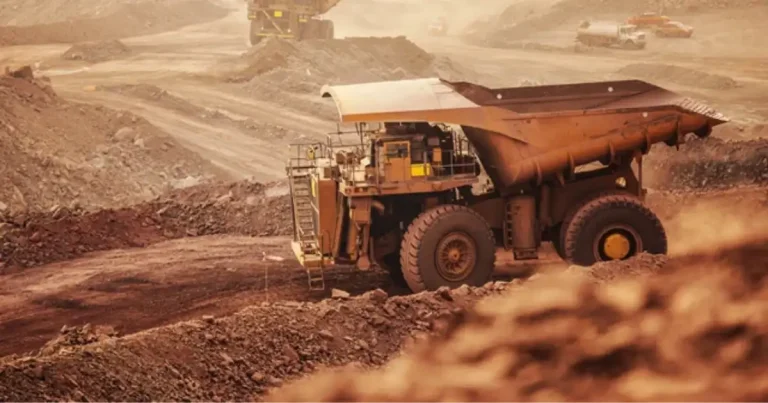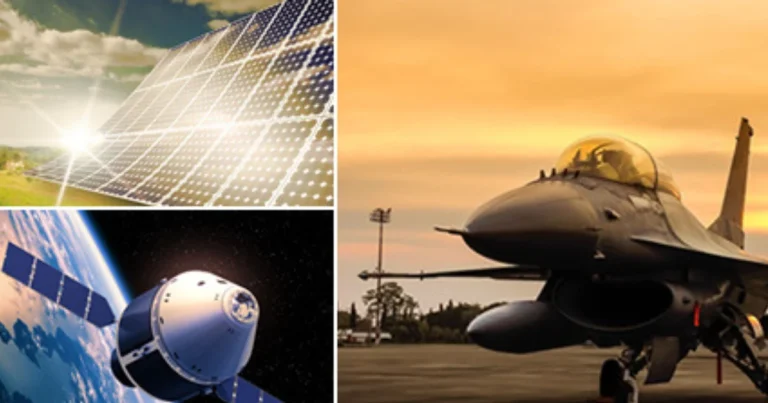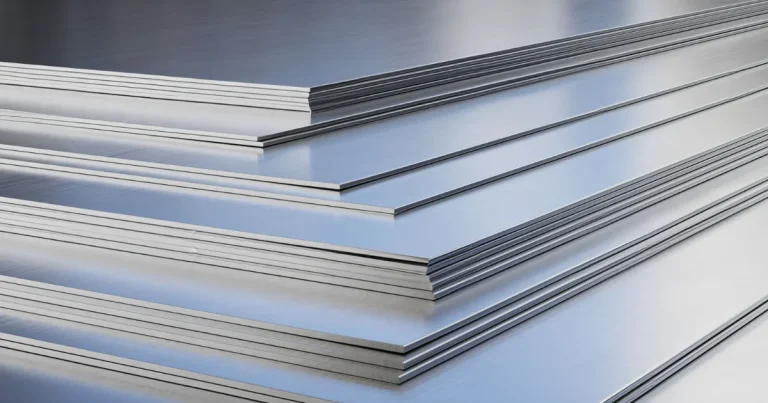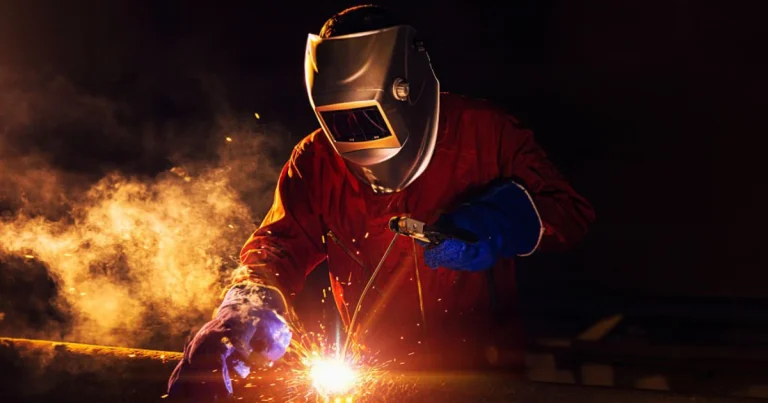Technical Resources
316L Used in the Pharmaceutical Industry
- Forms : Plate & Fitting &Pipes
- Grade : Stainless steel 316L
- Pharmaceutical Equipment
Chemical and Pharmaceutical Industry
316L is usually applied in chemical reactors, tanks, and pipelines. It performs well in aggressive chemical conditions, making it ideal for use in pharmaceuticals, bioprocessing, and storage of chemicals. Moreover, alloy weldability is critical in achieving high levels of sealing in such systems.
Grade 316 Stainless Steel for the Pharmaceutical Industry:
Globally known for its superior corrosion resistance to chlorides and acids – SS 316 is the second most austenitic stainless steel with the addition of 2% molybdenum making it greatly resistant to chloride ions too.
SS 316 is specifically used to make pharmaceutical products that stay in direct contact with fluids such as system tanks, pipelines, or bulk transportation of chemicals/corrosive liquids.
Its increased resistances also help in keeping the cleaning procedure easier by enabling the use of stronger cleansers and detergents without any worries of damage or appearance changes.
Duplex 2205 vs. Super Duplex 2507
- Forms : Plate & Coil &Pipes
- Grade : Duplex Steel 2507 DIN1.4410
- Offshore Drilling
Duplex stainless steels are a class of stainless steels with a dual-phase microstructure of austenite and ferrite, combining high strength with excellent corrosion resistance. Compared with conventional austenitic grades (such as 304 and 316L), duplex steels perform significantly better in petrochemical, offshore, and desalination industries.
Among them, 2205 (UNS S32205) is the most widely used standard duplex stainless steel, while 2507 (UNS S32750), as a super duplex, demonstrates superior performance in extreme environments.
Comparison: Duplex 2205 vs. Super Duplex 2507
2.1 Chemical Composition (wt%)
| Grade | Cr | Ni | Mo | N | Others |
| 2205 | 21–23% | 4.5–6.5% | 2.5–3.5% | 0.14–0.20% | Mn ≤2% |
| 2507 | 24–26% | 6–8% | 3–5% | 0.24–0.32% | Cu ≤0.5% |
Key Difference: 2507 has higher Cr, Mo, Ni, and N → better corrosion resistance and strength compared to 2205.
2.2 PREN (Pitting Resistance Equivalent Number)
- 2205: ~35–37
- 2507: ~40–45
Conclusion: 2507 is a “super duplex” grade, offering greater reliability in seawater and chloride-rich environments.
2.3 Mechanical Properties
| Property | 2205 | 2507 |
| Yield Strength | ≥450 MPa | ≥550 MPa |
| Tensile Strength | ≥620 MPa | ≥800 MPa |
| Elongation | 25–30% | 15–25% |
Conclusion: 2507 offers higher strength, but slightly lower ductility.
2.4 Corrosion Resistance
- 2205: Good resistance to pitting and crevice corrosion, suitable for medium-to-high chloride environments.
- 2507: Can withstand long-term service in natural seawater (Cl⁻ ~19,000 ppm) with minimal risk of pitting or stress corrosion cracking (SCC).
2.5 Applications
- 2205: Petrochemical equipment, heat exchangers, desalination (freshwater side), chemical tanks, auxiliary piping on offshore platforms, pulp and paper bleaching equipment.
- 2507: Subsea pipelines and wellhead equipment, desalination brine/reject systems, marine heat exchangers and condensers, high-pressure seawater injection systems.
2.6 Cost & Fabrication
- 2205: Lower cost, better workability and weldability.
- 2507: Higher cost, more difficult to fabricate and weld; requires strict heat input control and matching filler metals.
2.7 Overall Comparison
- Strength: 2507 > 2205
- Corrosion Resistance: 2507 > 2205 (especially in seawater/high chloride environments)
- Toughness/Ductility: 2205 > 2507
- Cost & Fabrication: 2205 is more economical and easier to process
- Typical Use:
-
-
2205 → Medium-to-high corrosion environments (refining, pulp & paper, desalination
-
Why Develop 2507 (Super Duplex)?
Limitations of 2205:
- PREN ~35–37 → still at risk of pitting in long-term exposure to natural seawater.
- Increased risk of SCC in high-chloride environments at >50 °C.
Advantages of 2507:
- PREN ~40–45 → reliable in natural seawater and high-temperature, high-chloride service.
- Higher strength (yield ≥550 MPa) → suitable for subsea manifolds and high-pressure injection systems.
In other words: 2205 is the general-purpose grade, while 2507 is the safeguard grade for extreme conditions.
The Evolution of the Duplex Stainless Steel Family
Driven by diverse application needs, duplex stainless steels have expanded into different categories:
| Category | Representative Grades | PREN | Features | Applications |
| Lean Duplex | 2304 (UNS S32304) | 22–25 | Low-cost, stronger than 304/316, moderate corrosion resistance | Architecture, freshwater, mild environments |
| Standard Duplex | 2205 (UNS S32205) | 35–37 | Balanced strength & corrosion resistance; most widely used | Chemicals, petrochemicals, desalination freshwater side |
| Super Duplex | 2507 (UNS S32750), Zeron 100 | 40–45 | Excellent seawater resistance, higher strength | Offshore oil & gas, seawater heat exchangers, brine systems |
| Hyper Duplex | S32707, S33207 | 48–52 | Extreme corrosion resistance + ultra-high strength, higher cost | Deepwater (>2000 m) oil & gas, harshest conditions |
Conclusion
- 2205: General-purpose, suitable for most applications requiring both strength and corrosion resistance.
- 2507 / Zeron 100: Preferred choice for extreme seawater and chloride environments.
- 2304: Low-cost option, suitable for mild corrosion.
- Hyper Duplex: Next-generation materials, designed for ultra-harsh deepwater and high-chloride service.
duplex 2507 DIN1.4410 UNS S32750 Resistance to Corrosion
- Forms : Plate & Coil &Pipes
- Grade : Duplex Steel 2507 DIN1.4410
- Offshore Drilling
2507 Duplex Steel is highly resistant to uniform corrosion by organic acids such as formic and acetic acid. It is also highly resistant to inorganic acids, especially if they contain chlorides. Alloy 2507 is highly resistant to carbide-related intergranular corrosion. Due to the ferritic portion of the duplex structure of the alloy it is very resistant to stress corrosion cracking in warm chloride containing environments. Through additions of chromium, molybdenum and nitrogen localized corrosion such as pitting and crevice attack are improved. Alloy 2507 has excellent localized pitting resistance.
The high chromium and molybdenum content of SAF 2507 makes it extremely resistant to uniform corrosion by organic acids like formic acid and acetic acid. SAF 2507 also provides excellent resistance to inorganic acids, especially those containing chlorides.
In dilute sulfuric acid contaminated with chloride ions, SAF 2507 has better corrosion resistance than 904L, which is a highly alloyed austenitic stainless steel pipe grade specially designed to resist pure sulfuric acid.
Stainless steel tube of type 316L (2.5%Mo) cannot be used in hydrochloric acid due to the risk of localized and uniform corrosion. However, SAF 2507 can be used in dilute hydrochloric acid. Pitting need not be a risk in the zone below the borderline in this figure, but crevices must be avoided.
Intergranural Corrosion
SAF 2507’s low carbon content greatly lowers the risk of carbide precipitation at the grain boundaries during heat treatment; therefore, the alloy is highly resistant to carbide-related intergranular corrosion.
Stress Corrosion Cracking
The duplex structure of SAF 2507 provides excellent resistance to chloride stress corrosion cracking (SCC). Because of its higher alloy content, SAF 2507 is superior to 2205 in corrosion resistance and strength. SAF 2507 is especially useful in offshore oil and gas applications and in wells with either naturally high brine levels or where brine has been injected to enhance recovery.
Pitting Corrosion
Different testing methods can be used to establish the pitting resistance of steels in chloride-containing solutions. The data above were measured by an electrochemical technique based on ASTM G 61. The critical pitting temperatures (CPT) of several high-performance steel in a 1M sodium chloride solution were determined. The results illustrate the excellent resistance of SAF 2507 to pitting corrosion. The normal data spread for each grade is indicated by the dark gray portion of the bar.
Crevice Corrosion
The presence of crevices, almost unavoidable in practical constructions and operations, makes stainless steel pipe more susceptable to corrosion in chloride enviroments. SAF 2507 is highly resistant to crevice corrosion. The critical crevice corrosion temperatures of SAF 2507 and several other high-performance stainless steel are shown above.
Duplex stainless steels are a class of stainless steels with a dual-phase microstructure of austenite and ferrite, combining high strength with excellent corrosion resistance. Compared with conventional austenitic grades (such as 304 and 316L), duplex steels perform significantly better in petrochemical, offshore, and desalination industries.
Among them, 2205 (UNS S32205) is the most widely used standard duplex stainless steel, while 2507 (UNS S32750), as a super duplex, demonstrates superior performance in extreme environments.
Comparison: Duplex 2205 vs. Super Duplex 2507
2.1 Chemical Composition (wt%)
| Grade | Cr | Ni | Mo | N | Others |
| 2205 | 21–23% | 4.5–6.5% | 2.5–3.5% | 0.14–0.20% | Mn ≤2% |
| 2507 | 24–26% | 6–8% | 3–5% | 0.24–0.32% | Cu ≤0.5% |
Key Difference: 2507 has higher Cr, Mo, Ni, and N → better corrosion resistance and strength compared to 2205.
2.2 PREN (Pitting Resistance Equivalent Number)
- 2205: ~35–37
- 2507: ~40–45
Conclusion: 2507 is a “super duplex” grade, offering greater reliability in seawater and chloride-rich environments.
2.3 Mechanical Properties
| Property | 2205 | 2507 |
| Yield Strength | ≥450 MPa | ≥550 MPa |
| Tensile Strength | ≥620 MPa | ≥800 MPa |
| Elongation | 25–30% | 15–25% |
Conclusion: 2507 offers higher strength, but slightly lower ductility.
2.4 Corrosion Resistance
- 2205: Good resistance to pitting and crevice corrosion, suitable for medium-to-high chloride environments.
- 2507: Can withstand long-term service in natural seawater (Cl⁻ ~19,000 ppm) with minimal risk of pitting or stress corrosion cracking (SCC).
2.5 Applications
- 2205: Petrochemical equipment, heat exchangers, desalination (freshwater side), chemical tanks, auxiliary piping on offshore platforms, pulp and paper bleaching equipment.
- 2507: Subsea pipelines and wellhead equipment, desalination brine/reject systems, marine heat exchangers and condensers, high-pressure seawater injection systems.
2.6 Cost & Fabrication
- 2205: Lower cost, better workability and weldability.
- 2507: Higher cost, more difficult to fabricate and weld; requires strict heat input control and matching filler metals.
2.7 Overall Comparison
- Strength: 2507 > 2205
- Corrosion Resistance: 2507 > 2205 (especially in seawater/high chloride environments)
- Toughness/Ductility: 2205 > 2507
- Cost & Fabrication: 2205 is more economical and easier to process
- Typical Use:
-
-
2205 → Medium-to-high corrosion environments (refining, pulp & paper, desalination
-
Why Develop 2507 (Super Duplex)?
Limitations of 2205:
- PREN ~35–37 → still at risk of pitting in long-term exposure to natural seawater.
- Increased risk of SCC in high-chloride environments at >50 °C.
Advantages of 2507:
- PREN ~40–45 → reliable in natural seawater and high-temperature, high-chloride service.
- Higher strength (yield ≥550 MPa) → suitable for subsea manifolds and high-pressure injection systems.
In other words: 2205 is the general-purpose grade, while 2507 is the safeguard grade for extreme conditions.
The Evolution of the Duplex Stainless Steel Family
Driven by diverse application needs, duplex stainless steels have expanded into different categories:
| Category | Representative Grades | PREN | Features | Applications |
| Lean Duplex | 2304 (UNS S32304) | 22–25 | Low-cost, stronger than 304/316, moderate corrosion resistance | Architecture, freshwater, mild environments |
| Standard Duplex | 2205 (UNS S32205) | 35–37 | Balanced strength & corrosion resistance; most widely used | Chemicals, petrochemicals, desalination freshwater side |
| Super Duplex | 2507 (UNS S32750), Zeron 100 | 40–45 | Excellent seawater resistance, higher strength | Offshore oil & gas, seawater heat exchangers, brine systems |
| Hyper Duplex | S32707, S33207 | 48–52 | Extreme corrosion resistance + ultra-high strength, higher cost | Deepwater (>2000 m) oil & gas, harshest conditions |
Conclusion
- 2205: General-purpose, suitable for most applications requiring both strength and corrosion resistance.
- 2507 / Zeron 100: Preferred choice for extreme seawater and chloride environments.
- 2304: Low-cost option, suitable for mild corrosion.
- Hyper Duplex: Next-generation materials, designed for ultra-harsh deepwater and high-chloride service.
Hastelloy C276® Alloy – UNS N10276 Advanced Nickel Alloy
- Forms : seamless_pipe,pipe_fittings
- Grade : Hastelloy C-276,N10276
- Chemical process industry
Overview
As a leading supplier and manufacturer in China, AEETHER provides cost-effective Hastelloy C-276 products.
Hastelloy C-276 (UNS N10276 / W.Nr. 2.4819) is a very commonly used nickel-chromium-molybdenum alloy. Among superalloys, it is known for its high molybdenum content.
First, as a corrosion-resistant element, molybdenum brings very high resistance to reductive corrosion to the alloy. By combining with nickel and chromium, Hastelloy C-276 has very good overall corrosion resistance. Compared with stainless steel, its excellent resistance to stress corrosion cracking in chloride-containing solutions cannot be replaced.
Secondly, the solid solution strengthening effect of molybdenum and tungsten elements is very obvious, and they bring very high strength to Hastelloy C-276 alloy. Like other nickel alloys, Hastelloy C-276 has good ductility. It is easy to shape and weld.
Hastelloy C-276 alloy is well suited for gas melting arc (GMA/MIG), gas tungsten arc (GTA/TIG) and shielded metal arc (SMA/Stick) welding processes. Hastelloy C-276 is ideal for marine applications. Its corrosion resistance makes it resistant to various corrosive substances in flowing seawater for a long time. However, Hastelloy C-276 also has good overall performance at high temperatures. It is very suitable for the preparation equipment of various corrosive chemicals or the reactor of various acidic substances.
Corrosion Resistance
First, Hastelloy C-276 alloy exhibits extremely high resistance to chloride-induced pitting and crevice corrosion. These forms of corrosion are particularly prone to occur in austenitic stainless steels.
Second, similar to other nickel alloys, one of the key features of Hastelloy C-276 is its resistance to chloride-induced stress corrosion cracking.
Additionally, Hastelloy C-276 has demonstrated exceptional ability to resist seawater corrosion. Sea water is the most common salt water solution. It is widely used in marine and offshore oil rigs and as a coolant in coastal installations.
Finally, although the microstructural inhomogeneity of the weld may result in slightly higher corrosion rates (relative to a uniformly forged product), Hastelloy C-276 is still able to resist corrosion in the weld area and exhibit excellent performance.
Mechanical Behavior
Hastelloy C-276 is a solid solution alloy. This alloy has good solid solution strengthening effect. Hastelloy C-276 is stronger than stainless steel, and even stronger than most solid solution alloys. Therefore, it is also easier to increase strength through cold working.
Note, however, that cold working will generally affect the resistance of Hastelloy C-276 to stress corrosion cracking. Proper annealing is very important for cold worked parts in order to achieve optimum corrosion performance. The corrosion resistance and ductility of this alloy can be improved by proper annealing process. In addition, for Hastelloy C-276, it is recommended to use a faster cooling rate for annealing.
An austenitic chromium-nickel-silicon grade, 253 MA
- Forms : Plate & Sheets Coils
- Grade : 253MA & S30815
- Oil industry equipment
1. What are the properties of 253MA?
253MA is a high-temperature austenitic stainless steel, often categorized as a super austenitic or heat-resistant grade, designed to perform exceptionally in elevated-temperature environments. One of its key properties is outstanding high-temperature oxidation and corrosion resistance: it forms a dense, adherent oxide scale composed of chromium, manganese, and silicon at temperatures up to 1150°C (2102°F), which effectively prevents further oxidation and makes it resistant to thermal cycling (repeated heating and cooling) as well as corrosion from industrial atmospheres like combustion gases and steam. It also exhibits good mechanical strength at elevated temperatures, maintaining useful tensile and creep strength across the range of 800°C to 1100°C (1472°F to 2102°F)-a performance that surpasses standard austenitic stainless steels such as 304 and 316 in high-heat scenarios. Additionally, 253MA has excellent thermal conductivity and thermal fatigue resistance; its thermal conductivity is higher than that of many nickel-based superalloys, reducing the buildup of thermal stress, and its austenitic structure enhances resistance to cracking caused by repeated heating and cooling cycles. It also offers good formability, allowing it to be processed through methods like rolling, bending, and deep drawing, along with reliable weldability-when using proper procedures (such as matching filler metals like ER 253MA), it retains joint integrity and high-temperature performance without significant embrittlement. Finally, due to its fully austenitic crystal structure, 253MA remains non-magnetic in both annealed and welded conditions, a trait that is valuable in applications where magnetic interference needs to be avoided.
2. What is the chemical composition of 253MA?
The chemical composition of 253MA is tightly regulated to optimize its high-temperature properties, and it complies with standards such as ASTM A240/A240M, EN 1.4835, and ASME SA-240. The typical composition (measured by weight percentage, wt%) includes carbon (C) in the range of 0.05–0.10 wt% (with a maximum of 0.10 wt%), which enhances high-temperature strength and aids in carbide formation. Chromium (Cr) is present at 20.0–22.0 wt% (maximum 22.0 wt%), serving as the primary element for oxidation resistance by forming a protective Cr₂O₃ scale. Nickel (Ni) makes up 10.0–12.0 wt% (maximum 12.0 wt%), stabilizing the austenitic structure and improving toughness. Manganese (Mn) is included at 1.5–2.5 wt% (maximum 2.5 wt%), helping to form protective oxide scales and boosting high-temperature strength. Silicon (Si) ranges from 1.4–2.0 wt% (maximum 2.0 wt%), enhancing oxidation resistance by forming SiO₂ and supporting the adhesion of the oxide scale. Nitrogen (N) is added at 0.14–0.20 wt% (maximum 0.20 wt%), strengthening the austenitic matrix and improving creep resistance. Cerium (Ce) is present in small amounts (0.03–0.08 wt%, maximum 0.10 wt%), refining the grain structure, improving scale adhesion, and reducing the oxidation rate. Phosphorus (P) and sulfur (S) are controlled to low levels, with maximum limits of 0.04 wt% and 0.03 wt% respectively, to minimize embrittlement and maintain weldability. Iron (Fe) acts as the base metal and constitutes the balance of the composition.
3. What is the tensile strength of 253MA?
The tensile strength of 253MA is dependent on its heat treatment condition, and it is typically supplied in the annealed state-this is the standard condition for its intended high-temperature applications. Standards like ASTM A240 and EN 10088-2 specify its tensile strength values. At room temperature, the ultimate tensile strength (UTS) of 253MA has a minimum requirement of 650 MPa (94,300 psi), with a typical range of 650–750 MPa (94,300–108,800 psi). For elevated temperatures, which are critical to its use case, the minimum UTS is approximately 300 MPa (43,500 psi) at 800°C (1472°F), around 120 MPa (17,400 psi) at 1000°C (1832°F), and roughly 60 MPa (8,700 psi) at 1100°C (2012°F). These values demonstrate the alloy’s ability to retain load-bearing capacity in high-heat environments, a key requirement for applications such as furnace components and exhaust systems.
4. What is the yield strength of 253MA?
Similar to tensile strength, the yield strength of 253MA-measured as 0.2% proof stress, which is the stress at which 0.2% permanent deformation occurs-is specified for the annealed material and varies with temperature. At room temperature, the minimum yield strength requirement is 300 MPa (43,500 psi), with a typical range of 300–400 MPa (43,500–58,000 psi). For elevated temperatures, the minimum 0.2% proof stress is approximately 180 MPa (26,100 psi) at 800°C (1472°F), around 70 MPa (10,150 psi) at 1000°C (1832°F), and roughly 35 MPa (5,080 psi) at 1100°C (2012°F). These yield strength values ensure that 253MA can withstand operational stresses without undergoing permanent deformation, even when exposed to the high temperatures it is engineered to handle.
Super Austenitic Stainless Steel UNS S31254(1.4547/F44)
- Forms : Plate & Sheets Coils
- Grade : 254SMO & S31254
- Tall Oil Distillation Columns And Equipment
UNS S31254 (254 SMO) is a high-alloy austenitic stainless steel known for its exceptional resistance to chloride-induced corrosion, pitting, and crevice corrosion. It was originally developed to address the needs of industries operating in harsh marine and chemical processing environments where conventional stainless steels, like 316L, fall short. With a combination of high molybdenum and nitrogen content, UNS S31254 (254 SMO) offers a superior solution for resisting corrosion, making it ideal for demanding applications in the oil and gas, chemical processing, pulp and paper, and marine industries.
The steel combines moderate mechanical strength (typically over 300 MPa yield strength) and high ductility with excellent corrosion resistance in seawater and a variety of industrial environments. Typically the alloy has a PREn (Pitting Resistance Equivalent) of 42-44 which ensures that the resistance to pitting corrosion is high. In addition, the steel provides good resistance to crevice corrosion. Ambient and sub-zero temperature notch ductility is very good. These attributes mean that this high molybdenum stainless steel can be
QUOTE, BUY, TRACK
We make it easy to get instant pricing and purchase your metal at the click of a button. Track your order progress, get notified when it ships, and follow your shipment online until it’s delivered. It’s that easy!

